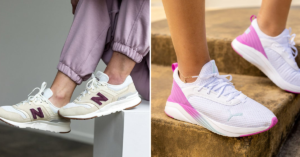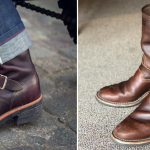The concept of fast fashion, with its whirlwind pace of ever-changing styles at bargain prices, may dazzle the average consumer. Yet beneath this shimmering veneer lies a dark truth. As eager shoppers clamor for the latest trends, the fashion industry churns out an overwhelming avalanche of garments, resulting in a staggering surge in textile waste. The relentless cycle of purchase-wear-discard perpetuated by fast fashion leads to overflowing landfills as fabrics languish for decades before finally breaking down, releasing noxious pollutants into the atmosphere.

But wait there’s more! The environmental repercussions of fast fashion extend far beyond mere landfill overflow. The very production process itself guzzles immense quantities of water; thousands upon thousands of liters are dedicated to cultivating cotton or saturating fabrics with dye. And let us not forget about the colossal carbon footprint left behind by clothing manufacturing – greenhouse gas emissions swirl around like malevolent specters throughout each step from creation to transportation. This insatiable thirst for new apparel also beckons forth a deluge of harmful chemicals within textile production, further despoiling our surroundings and jeopardizing precious biodiversity.
The Effects of Textile Waste on Landfills
The mind-boggling amount of textile waste piling up in landfills is truly staggering. Garments crafted from synthetic fibers such as polyester or nylon can linger for centuries before breaking down, leaving a lasting mark on our planet. The relentless pace of the fast fashion industry only adds to the problem, with perfectly wearable clothes being discarded simply to keep up with fleeting trends.
To make matters worse, the decomposition of textiles in landfills can unleash dangerous gases like methane – a potent greenhouse gas that plays a major role in climate change. As natural fibers deteriorate under these conditions, they release harmful chemicals into the earth, further contaminating our already delicate ecosystem. This vicious cycle not only fills up landfills at an alarming rate but also worsens the environmental crises we are currently grappling with.
The Water Consumption of the Fashion Industry
Have you ever stopped to ponder the immense impact of the fashion industry on water usage? A staggering 2,700 liters of water are needed just to create a single cotton t-shirt. And that’s merely scratching the surface. The process involves dying fabrics and processing materials, all of which guzzle down this precious resource at an alarming rate.
Given that a considerable amount of clothing is crafted from cotton, a crop notorious for its insatiable thirst, it’s hardly surprising that the fashion world leaves such a colossal water footprint in its wake. Factor in the necessity of water for cleaning and perfecting garments during manufacturing processes, and you’re left with a situation characterized by exorbitant levels of water consumption. This stark reality underscores the urgency of seeking out methods to curtail water usage within fashion production in order to mitigate the industry’s impact on this indispensable natural asset.
The Carbon Footprint of Clothing Production
In the realm of clothing production, the carbon footprint looms large and ominous. Every stage of the process, from cultivating fibers to crafting garments, releases a flurry of greenhouse gases into the already burdened atmosphere. The journey begins with the cultivation of crops such as cotton or raising livestock for materials like wool, demanding vast expanses of land, copious amounts of water, and an insatiable appetite for energy.
Once these raw materials are in hand, they undergo a tumultuous transformation – being processed, dyed, and stitched together to form wearable creations. This manufacturing frenzy heavily relies on fossil fuels for its voracious energy needs, intensifying the emission of carbon into our delicate environment. Even the voyage of these finished products from factory floors to store shelves and then ultimately into consumers’ hands adds another layer to the carbon puzzle woven within every piece of clothing we purchase.
The Use of Harmful Chemicals in Textile Manufacturing
Within the realm of fashion, chemicals wield a formidable influence over the intricate web of manufacturing processes. From vibrant dyes to exquisite finishes, these enigmatic substances are harnessed to manifest the desired hues and textures in the creation of clothing. Yet, lurking beneath this facade of beauty lies a dark truth – many of these chemical agents harbor malevolent qualities that pose grave threats to both our fragile environment and precious human health.
The disconcerting conundrum presented by the utilization of hazardous chemicals in textile production is multifaceted. The insidious pollution wrought by these toxic compounds during the dyeing and finishing stages can unleash cataclysmic repercussions upon delicate waterways, decimating unsuspecting aquatic life forms and disrupting entire ecosystems with ruthless abandon. Furthermore, as if shrouded in an impenetrable cloak of peril, workers within textile factories find themselves ensnared in a treacherous dance with these noxious substances, their very existence imperiled by looming specters of dire health ramifications.
The Impact of Fast Fashion on Biodiversity
The intricate web of fast fashion extends far beyond the realm of trendy garments, delving deep into the very fabric of biodiversity. With cotton cultivation pushing boundaries through copious pesticide use, biodiversity suffers a silent demise amidst the chaos. Textile dyes seep into aquatic realms, leaving behind a trail of pollution that wreaks havoc on ecosystems and wildlife alike. The disruptive force of the fashion industry knows no bounds as it tugs at the delicate threads that hold our natural world in equilibrium.
As demands for swift and inexpensive garment production escalate, natural resources such as water and land bear the brunt of depletion. Ecosystems crumble under the weight of habitat destruction, sacrificed at the altar of textile factories and sprawling farmlands. The reckless abandon with which fast fashion operates spells doom for our environment’s welfare, casting a dark shadow over not only ourselves but also the myriad plants and animals that inhabit our precious planet.
The Role of Synthetic Fabrics in Environmental Pollution
The ubiquity of synthetic fabrics such as polyester, nylon, and acrylic in the fashion world may deceive us with their affordability and adaptability. Yet, a darker truth lurks beneath their shiny facade when considering their ecological footprint. When these artificial textiles undergo the simple act of washing, they unleash minuscule plastic fibers known as microplastics into our precious waterways. These seemingly insignificant particles become a formidable force in polluting our aquatic ecosystems, wreaking havoc on marine creatures and potentially infiltrating our very food chain.
But wait, there’s more! The environmental damage caused by synthetic fabrics does not stop at microplastic contamination. The very process of manufacturing these materials involves the utilization of harsh chemicals and copious amounts of energy, resulting in massive carbon emissions and water pollution. This toxic cocktail not only spells disaster for Mother Earth but also poses serious health hazards for textile workers laboring in factories and residents living nearby.
The Importance of Ethical Labor Practices in Fashion
Within the realm of fashion, one must navigate through a maze of perplexing ethical considerations regarding labor practices. It is not uncommon for numerous brands to shift production to countries with loose labor regulations, resulting in the exploitation of vulnerable workers. This exploitation manifests in various forms such as meager wages, grueling work hours, and hazardous working conditions. By aligning yourself with companies that champion ethical labor standards, you are actively rebelling against these injustices and advocating for fair treatment of individuals within the fashion sphere.
Furthermore, delving into ethical labor practices transcends mere humanitarian concerns; it also cultivates an atmosphere of transparency and responsibility throughout the intricate web of fashion supply chains. When you opt for brands that prioritize equitable compensation, safe workplace settings, and fundamental workers’ rights, you are endorsing a more sustainable and conscientious industry at large. Ultimately, your dedication to upholding ethics in fashion can yield positive repercussions for garment workers’ livelihoods while bolstering a more just and socially aware fashion landscape.
The Benefits of Choosing Sustainable Fashion Brands
Sustainable fashion brands exist to craft clothing through eco-conscious means, baffling the traditional norms of the industry. By aligning with these innovative labels, you are actively participating in a transformative movement towards a pristine environment and a flourishing planet. Moreover, many sustainable brands place a strong emphasis on utilizing ethically sourced materials and upholding equitable labor standards throughout their manufacturing procedures.
When you embrace sustainable fashion brands, you are not merely purchasing garments – you are making a resounding declaration. You are signaling to the realm of fashion that your values lie in sustainability and ethical integrity. In an era dominated by rapid trends and disposable apparel, endorsing sustainable brands is akin to advocating for a more environmentally sound and socially conscious tomorrow.
Simple Ways to Make More Eco-Friendly Fashion Choices
In the perplexing world of eco-conscious fashion consumption, there are a myriad of actions one can take. Thrifting or perusing second-hand stores is a burst of creativity that not only yields unique pieces but also breathes new life into items destined for landfills. The allure of vintage fashion never ceases to amaze.
Investing in quality pieces that withstand the test of time is another enigmatic path towards sustainable fashion choices. Rather than chasing fleeting trends, opt for timeless staples that seamlessly blend with any ensemble. Embracing versatility and durability breaks the cycle of fast fashion consumption and its profound environmental repercussions.
FAQs about The Environmental Impact of Fast Fashion
Why does fast fashion have such a detrimental impact on the environment?
Fast fashion bewilderingly contributes to astronomical levels of textile waste, insatiable water consumption, colossal carbon footprint, and utilization of hazardous chemicals in textile manufacturing.
In what way does textile waste affect landfills?
Textile waste enigmatically engulfs precious space in landfills and exacerbates environmental contamination as synthetic fabrics emit pernicious chemicals during decomposition.
How does the fashion industry play a role in water consumption?
The fashion industry mystifyingly stands as one of the paramount consumers of water due to intricate processes like dyeing and finishing fabrics.
What exactly is the carbon footprint associated with clothing production?
Carbon footprint intriguingly pertains to the volume of greenhouse gases emitted throughout clothing production, transportation, and disposal.
Why are harmful chemicals commonly used in textile manufacturing?
Harmful chemicals cryptically are utilized to attain specific colors, finishes, and properties in fabrics; however, they can have adverse effects on both the environment and human health.
In what manner does fast fashion affect biodiversity?
Fast fashion perplexingly contributes to environmental degradation through deforestation, habitat destruction, and water pollution – all posing threats to biodiversity.
Conclusion
Fast fashion’s rapid production cycle and low-cost garments may offer consumers instant gratification, but they come at a significant environmental cost. The industry’s reliance on synthetic fabrics, intensive water use, and harmful chemicals contributes to pollution, excessive waste, and resource depletion. This cycle not only fills landfills with non-biodegradable textiles but also releases harmful substances into our ecosystem, threatening biodiversity and the health of communities worldwide. Furthermore, the extensive carbon footprint of clothing production exacerbates climate change, highlighting the urgent need for more sustainable practices.
Choosing sustainable fashion and making conscious wardrobe choices are powerful ways to counteract the detrimental effects of fast fashion. By supporting brands that prioritize ethical labor practices and eco-friendly materials, consumers can reduce their environmental impact and promote a more sustainable future. Simple actions like buying second-hand, investing in quality pieces, and understanding the true cost of fast fashion can help shift the industry toward a more ethical and environmentally responsible path. Your choices today can contribute to a healthier planet and a more equitable fashion landscape for all.






